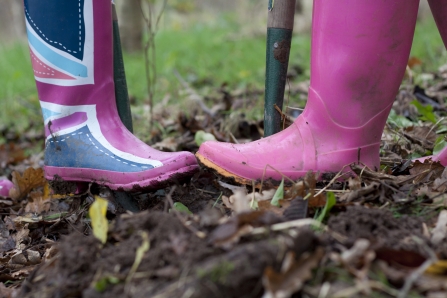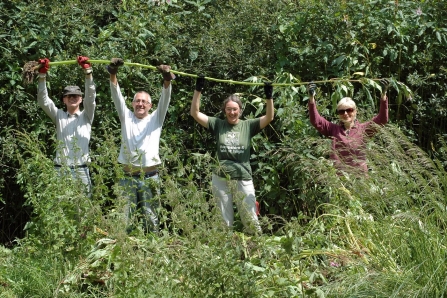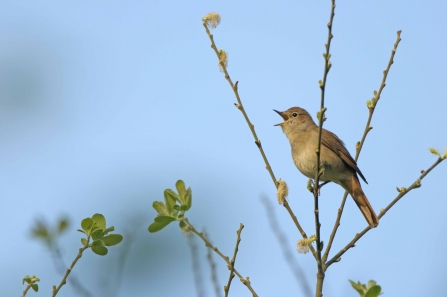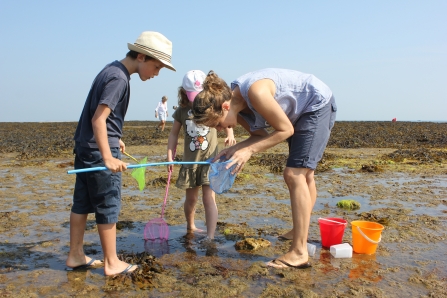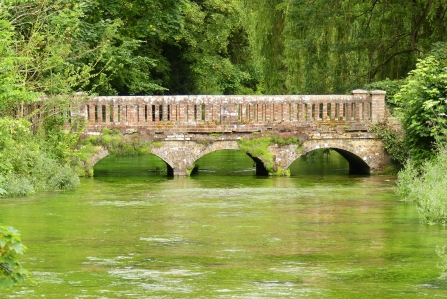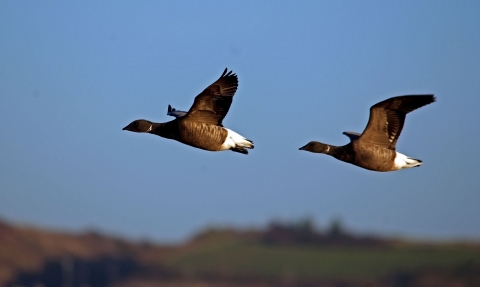
© Ian Cameron-Reid
Projects and partnerships
Nature knows no boundaries and there are many people and organisations who want to make a difference.
It's only by working with partners across our two counties that we'll be able to save wildlife now and into the future.
Our current projects
Catchment Sensitive Farming
© Clive Chatters
We are giving valuable environmental advice and support to farmers, and have helped 80 farmers to access grant aid packages, which have contributed more than £7 million to the Island’s rural economy.
Together we're improving the Island’s countryside for wildlife and future management of our natural resources in the light of climate change, water poverty and food production.
Coastal Birds
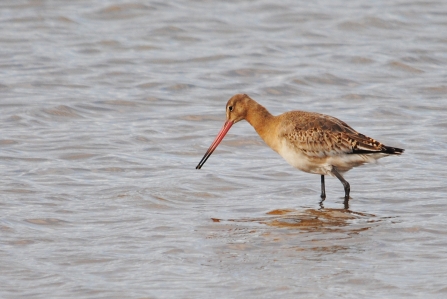
© Amy Lewis
The Solent is one of the most important coastal zones in the UK, providing an internationally important over-wintering area for waders, ducks and geese. It's also immensely busy in terms of recreation, commerce, and industry, all of which put coastal birds under pressure. We're working to protect these vulnerable bird populations as a partner in Bird Aware Solent and through our Solent Waders and Brent Goose Strategy.
Conservation Grazing
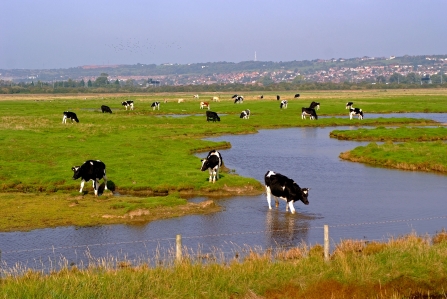
© Ian Cameron-Reid
In the past, land would have been grazed by wild animals, or through traditional farming and commoning practices. Nowadays, conservation grazing animals are used to replicate this traditional method of land management because mixed farming has become less frequent and much of our land has been fragmented up by human development.
Heathlands Reunited
We're working with eleven organisations, including the South Downs National Park Authority, to recreate, reconnect, and restore the existing 1% of heathland left in the National Park. This project aims to inspire communities to visit and learn about their heathland, and ultimately to look after them for generations to come.
Jordans Farm Partnership
In the UK more than 70% of land is dedicated to farming. This makes farmers crucial to reversing the decline of wildlife across the country and bringing about nature’s recovery. One of the ways in which we support our local farmers is through this national initiative to boost wildlife on farmland.
My Wild Neighbourhood
Go wild! Discover nature in your community with Southern Co-op and your Wildlife Trust. Whether you live in the heart of a city or down a country lane – there’s always new wildlife experiences waiting to be discovered right on your doorstep.
New Forest Non-Native Plants Project
The New Forest is a crucial area for wildlife but it is threatened by invasive non-native plants. These plants were introduced to UK gardens as ornamentals or as oxygenators in garden ponds but they have 'jumped the garden fence' and invaded the countryside. They grow vigorously, spread rapidly and elbow-out our native wildflowers which provide important food and nectar for invertebrates.
Our ongoing efforts, often supported by volunteers, are helping to control the spread of these vigorous invaders and protect habitats for native plants and wildlife.
Nightingale Recovery Project
We're joining forces with our partners to try and halt the decline of the common nightingale in Hampshire and the Isle of Wight. Together we're organising volunteers to carry out surveys in Hampshire and on the Isle of Wight during the nightingale’s breeding season to find out where the birds are nesting and which areas need protection.
Secrets of the Solent
The Solent is a special place, with endless surprises just beneath its surface. There are vast seagrass meadows and intricate chalk reefs, as well as fascinating species like seahorses, thresher sharks, and cuttlefish. We're celebrating our extraordinary waters, the amazing people and wildlife that share them, and the inspiring work being done to safeguard their future.
Solent Seagrass project
We're working to survey where seagrass exists now and where it is no longer present, meaning we are better able to understand the threats this precious habitat faces, and get new protections in place to help it thrive.
Southern Chalkstreams Project
Working in partnership with the Environment Agency, Bristol Zoological Society, Sparsholt College and Natural England, this Vitacress Conservation Trust funded project is focussed on threatened chalk river species, with particularly the white-clawed crayfish.
Watercress and Winterbournes
The Rivers Test and Itchen are iconic features of the Hampshire landscape, but the chalk streams that give them life are some of the greatest hidden treasures in the county. With only around 200 existing worldwide, and most of those in England, chalk streams provide an ecologically rare home for a whole host of wonderful wildlife. This five-year Landscape Partnership Scheme brings together local communities and 16 organisations to restore and celebrate seven special chalk streams.
Young Naturalists
A monthly conservation group for teenagers, 13-17 years old, to take part in practical conservation tasks, develop bushcraft skills and help with species surveys.
Sessions are run in small supervised groups and will include a variety of different activities, such as:
Practical conservation and habitat management
Improving and expanding identification skills
Species surveys and monitoring
Trips to visit other nature conservation sites
Learning from local wildlife experts
Improving other skills, like wildlife photography
This project has been made possible with generous funding support from Cameron Bespolka Trust.
Our completed projects
Down to the Coast: Wetland Restoration
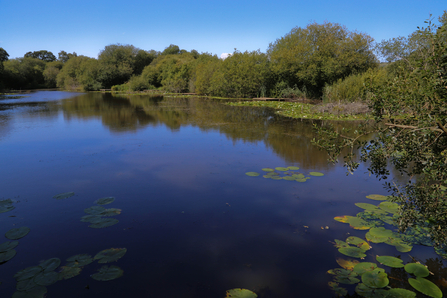
Eastern Yar, Isle of Wight © Ian Pratt
The Eastern Yar is the longest river on the Isle of Wight, rising from chalk downs near Niton and joining the sea at Bembridge Harbour. Much of its course is naturally characterised by floodplains and wetlands, providing a haven for kingfishers, water voles, Cetti's warblers, and water-loving plants. From 2016-2020 we undertook large-scale restoration works to help return the Eastern Yar to its former glory, as part of Down to the Coast.
Down to the Coast: Wildbeach
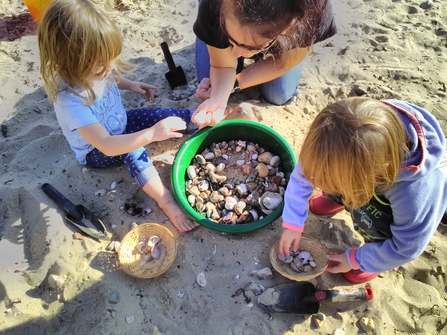
Children collecting shells at Wildbeach session © HIWWT
The Isle of Wight is known for its miles of beautiful coastline, which is prized by residents and visitors alike. Yet despite its proximity the coast is not a frequent destination for many local children, some of whom who also struggle to learn in a traditional classroom setting. From 2016-2020 we ran Wildbeach sessions for local children and young people, with the aim of connecting them to their coastal environment, as part of Down to the Coast.
Down to the Coast: Woodland Apprentices
Woodland apprentices with an ash gate hurdle
The woodlands of the eastern Isle of Wight are among the UK's richest areas for wildlife. Beneath their canopies you can find rare and vulnerable species like the red squirrel and the dormouse, as well as plants which need specialist conditions to thrive, like narrow-leaved lungwort and the native bluebell. From 2016-2020 we helped eight local young people to become the future of woodland conservation, as part of Down to the Coast.
Marsh Fritillary Reintroduction
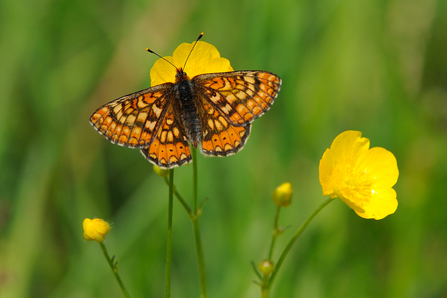
© Amy Lewis
The last marsh fritillary butterfly disappeared from North Hampshire's meadows in 1996, but an innovative partnership returned the species to its former haunts.
Secrets of the Solent
We're working to survey where seagrass exists now and where it is no longer present, meaning we are better able to understand the threats this precious habitat faces, and get new protections in place to help it thrive.
Woodland Therapy
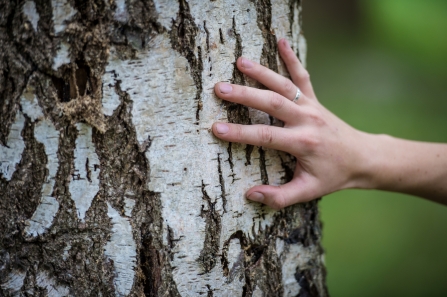
Touching a tree © Matthew Roberts
From 2015-2020 we sought to use the natural environment to promote mental health and well-being using the Forest School approach. This project complemented mainstream mental health provision by building self-esteem, self-confidence and independence in adults struggling with mental health illnesses.
Our Past Our Future
We're working with ten other partners to restore lost habitats, develop Forest skills and inspire a new generation to champion and care for the New Forest. This includes our New Forest Non Natives Plant Project and biodiversity monitoring by our ecology team, to measure how wildlife is being helped by the partnership's work.

